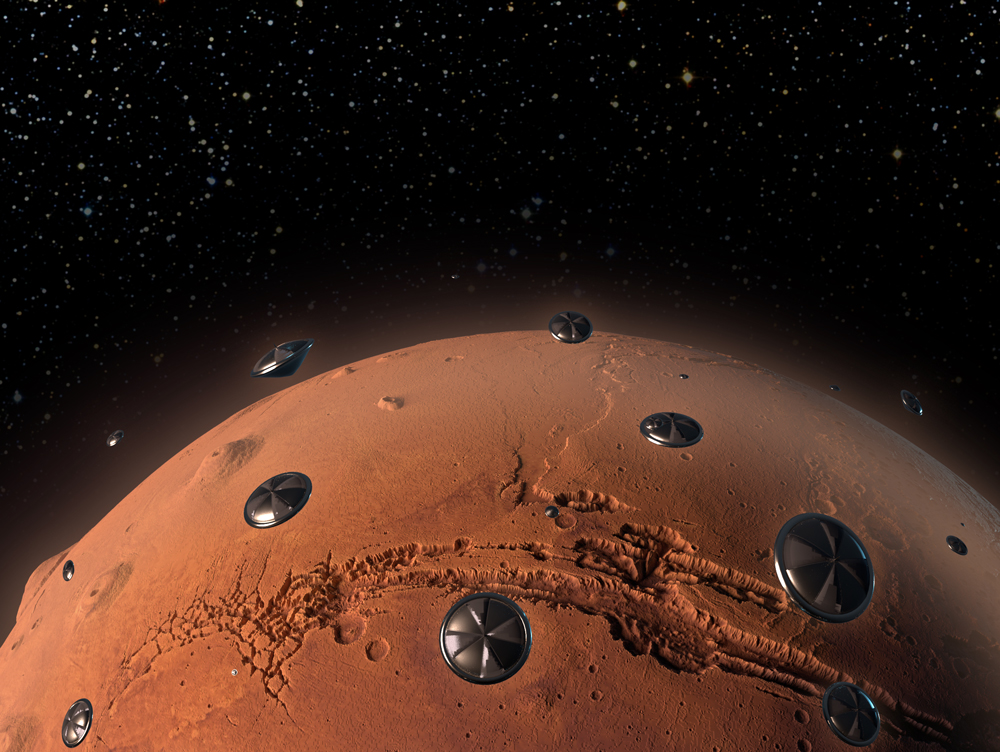Revolutionizing Access to the Martian Surface
Workshop Image Gallery
The KISS images below are public domain, but must be accompanied by the appropriate image credit.
Figure 1. Crucial scientific measurements for understanding the Mars system require access to and interaction with the Mars surface. Access to and interaction with rocks and ices is needed for measurements of texture, chemistry, mineralogy, isotopes at organics content at sub-centimeter scale. Landed measurements are required for boundary layer winds and measurements of exchanging gases (e.g., CH4, H2) at the surface-atmosphere boundary. Priority measurements of the subsurface that can only be accomplished with landers include sounding for water, heat flow measurement, and detecting Mars quakes to resolve subsurface structure at regional scales.
Image credit: Keck Institute for Space Studies / Chuck Carter.
Figure 2. Mars pulls technology from - and can push technology to - other sectors. Future Mars missions can draw on technology developments from a wide range of sponsors and markets, enabling enhanced capabilities as well as reducing development and recurring costs.
Image credit: Keck Institute for Space Studies / Chuck Carter.
Figure 7. Qualitative depiction of the last decade has seen a growth in the diversity of stakeholders investing in Mars exploration. New stakeholders are expected to continue into the future as other national agencies and private ventures (e.g., SpaceX) grow investments.
Image credit: Keck Institute for Space Studies / Chuck Carter.









